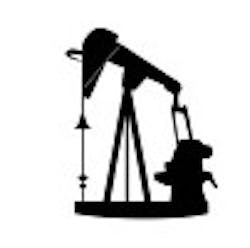Strong Outlook for Oil & Gas Automation Spending
The economic downturn has had a pronounced impact on demand and the price of oil. Despite this, massive investments are still needed to ensure the industry has enough production capacity to meet future demand, points out a new study from ARC Advisory Group Inc. (www.arcweb.com), Dedham, Mass.
Automation expenditures by the upstream oil and gas sector, which includes exploration, production, and pipelines, are expected to grow at a compound annual growth rate of 9 percent over the next five years. The market was $6.9 billion in 2007 and is projected to grow to $10.4 billion by 2012, according to the ARC study.
The current economic climate offers many challenges, including plummeting demand, a collapse in once lofty oil prices, and a very uncertain outlook. Though oil and gas companies have made some adjustments in response to the downturn, they still plan to make major investments in coming years to build capacity for an inevitable increase in demand over the long term, ARC says.
Still spending
“With the global economic downturn as a backdrop, it would be understandable if oil companies were to dial back their capital investments as a response to reduced demand and falling oil prices. However, many of the major oil companies are maintaining their capital spending plans into 2009 and beyond,” observes Analyst Allen Avery, the principal author of ARC’s “Automation Expenditures for Upstream Oil & Gas Industry Worldwide Outlook.”
The report predicts that increasing demand over the long term will continue to drive significant growth in capital investments and automation expenditures in the global oil and gas industry. With access to only a minority percentage of proven reserves, integrated oil companies must attempt to replace their reserves in remote areas that are much less hospitable and more dangerous—both environmentally and politically. This is driving huge expenditures in large, complex, and difficult capital projects in the production segment.
According to estimates, demand for petroleum products will increase substantially as the economies in developing regions improve and per capita energy consumption increases. Today’s production and processing capacities struggle to keep ahead of the demand curve and both upstream and midstream facilities will need to be expanded. New sources, such as tar sands, shale oil, and coal-to-liquid gas, will require new midstream and production facilities to be developed, increasing demand for automation systems and field devices, the ARC study projects.
Outlook by region
Regionally, the highest growth rates will occur in Asia and Latin America, ARC says. Asia’s share of sales will reach 25 percent, and while expenditures in Latin America will nearly double over the forecast period, the region will still remain a relatively small portion of the overall market.
Despite the strong growth in developing regions, the Middle East, home to the world’s largest conventional oil and gas deposits, will grow at average rates. North America’s upstream business, because it relies on non-conventional projects such as the Canadian tar sands, will trail the market.
ARC Advisory Group Inc.
www.arcweb.com

